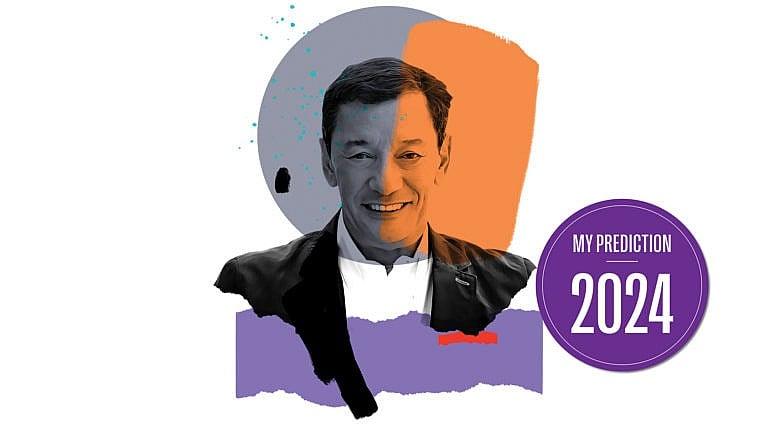Sport-ticket prices are going to balloon out of reach
As old favourites grow costlier, fans will start seeking new teams and new experiences

(Illustration by Anna Minzhulina)
Share

Ken Wong is an associate professor at the Smith School of Business, Queen’s University
Any sports fan can tell you that attending games in person is becoming a luxury experience in this country. Prices for some Blue Jays season passes are set to double in 2024. The average ticket price for a Leafs home game now exceeds $200, with the good seats going for far more—try treating a family of four to a game at that rate. And the average price to attend the Canadian Grand Prix in Montreal spiked to over $500 last year. There’s no question that the price of being a fan will keep rising in 2024, but the reasons why are more complicated than spiking demand and rising inflation.
Yes, standard inflationary pressures, which affect materials, maintenance and salaries, clearly play a role. But there are two bigger factors. First, sports are increasingly a business perk. Companies in the biggest cities—especially Toronto, Vancouver and Montreal—purchase large blocks of expensive tickets, without much regard for price. The higher the price, the greater the honour they bestow on clients.
Second, many teams have exceptionally strong fanbases—audiences large and loyal enough that teams can command incredibly high prices. The Leafs, the Raptors and the Saskatchewan Roughriders, among others, can sell tickets in the high hundreds of dollars or, for some last-minute tickets, more than $1,000.
That’s fine for businesspeople and hardcore supporters. But we live in a country where two million people use food banks every month. Even a $200 ticket—mid-range for NHL or NBA games—is out of reach for many. I expect that, for that reason, in 2024 we’ll see a fan migration to lower-level leagues. After all, for the price of one Leafs ticket, you can buy season tickets to a junior hockey team and have some of the best seats in the house. The Kingston Frontenacs, for example, play in an arena comparable to the lower bowl at the Air Canada Centre in Toronto for about one-tenth of the price.
I also expect we’ll start to see audiences finding new sports, which may be cheaper to attend but are just as thrilling. One obvious alternative is the CFL, which remains a great deal—you can usually find a good ticket for $50. But in 2024 I’m giving the edge to Major League Soccer, the North American league with teams in Canada’s three largest cities. The calibre doesn’t compare to what you see in Europe, but there are more world-class players than in the CFL, the fans are wild and the atmosphere is electric. It’s becoming one of my favourite sports to watch in Canada, and hype is building around it thanks to our men’s national team’s appearance at last year’s World Cup. Meanwhile, the smaller Canadian Premier League is worth fans’ attention too. Its teams, like Forge FC in Hamilton and the Halifax Wanderers, are building devoted fanbases in smaller markets.
This migration of fans will also inject life into women’s sports, where tickets are also a bargain. The new Professional Women’s Hockey League will hold its inaugural season next year, with three of its six franchises in Canadian markets: Montreal, Toronto and Ottawa. Once the media begins talking more about the league, fanbases will form around Canadian teams, and hype around specific players will build. Ticket costs will rise, but they’ll still be cheap relative to men’s teams.
On the flipside, the big leagues will keep getting pricier. To provide more bang for fans’ bucks, teams will augment the live experience with special events like music acts and product giveaways. The next wave of fan experiences will also involve the use of smartphones: people with tickets will have access to special commentary and video replays, or interactive segments with the players, like quizzes or trivia—all in the spirit of adding value to the ticket.
And, of course, winning will always partly govern ticket prices. If a Canadian team signs a superstar who propels them to a championship—like the Raptors did with Kawhi Leonard in 2019—pricey tickets will follow. A big Leafs playoff run could trigger dramatic price increases. If people are willing to pay $10,000 for a ticket, the market will oblige.
One thing I can guarantee for 2024 is that there will always be an audience for live sports, no matter how expensive they get. I remember a few years ago, when pundits predicted that at-home streaming services would become so sophisticated that teams might even start paying people to attend games. These post-lockdown years have shown us we’re nowhere near that point. People will keep shelling out to sit in crowded bleachers with family and friends and get rowdy in a sea of fans. And if they can’t afford to do it at Canada’s hottest games, they’ll find somewhere else.

This article is part of the Year Ahead 2024, which is Maclean’s annual look at everything that’s coming your way next year. You can buy the print version right here.